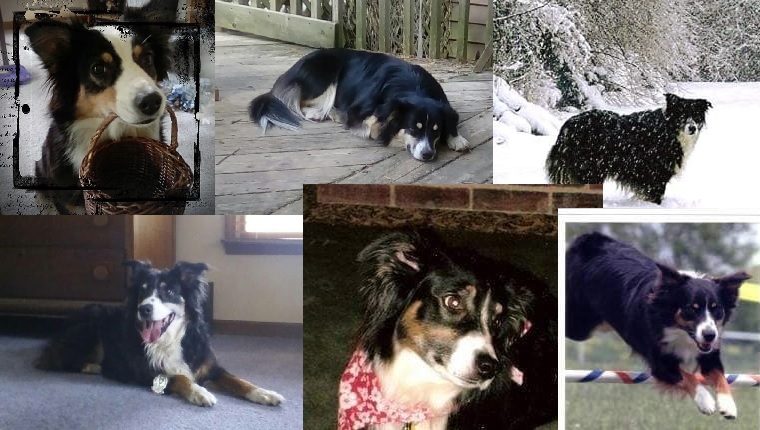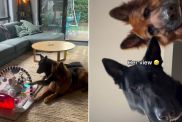September is National Service Dog Month, and in honor of that, DogTime would like to increase awareness and share appreciation for service dogs.
Service dogs are different from pets, therapy animals, and even emotional support animals. They’re trained to provide specific services to persons with disabilities or medical conditions, and they accompany their humans in their day-to-day activities.
I had the pleasure of interviewing Gayle Silberhorn, who is both a service dog owner and trainer. She started out with Sera, an Australian Shepherd service dog. Sera’s daughter, Bryn, is a therapy dog, and Sera’s granddaughter, Saga, is in service dog training.
Here’s what Gayle had to say!
What’s Life Like With Service Dogs?
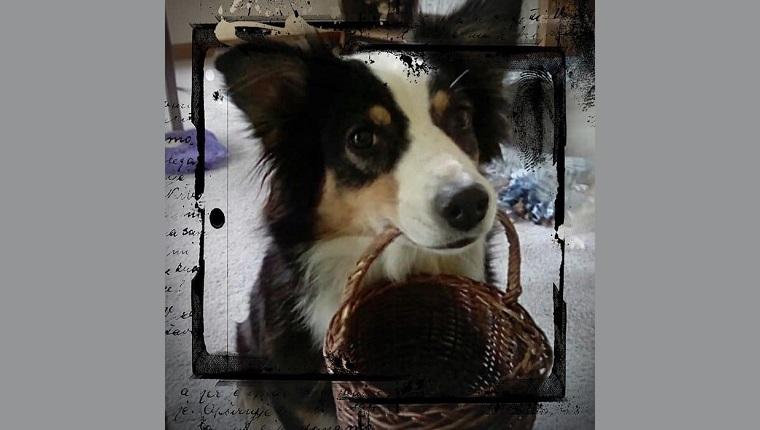
AMANDA: I think a lot of people are really curious about service dogs, and they’ll love hearing from someone who’s had multiple aspects of experience with them. Could you please tell us a bit about your daily life and how your conditions affect you?
GAYLE: I was diagnosed with fibromyalgia and chronic fatigue syndrome about 25 years ago. I personally believe my problem is more of the chronic pain causing fatigue, though, and I also have severe migraines.
I try to keep a schedule of taking my dogs out to run and play in the morning and do training later in the day. A schedule helps me to concentrate on having a meaningful life.
Currently, two of my Aussies are therapy dogs. One of them is Bryn, who is the late Sera’s daughter, and we volunteer with hospice and work with special needs kids. Since the lockdown, we have maintained our visits virtually one or two days a week.
I am also training Sera’s granddaughter, Saga, as my service dog.
Sera Starts It All
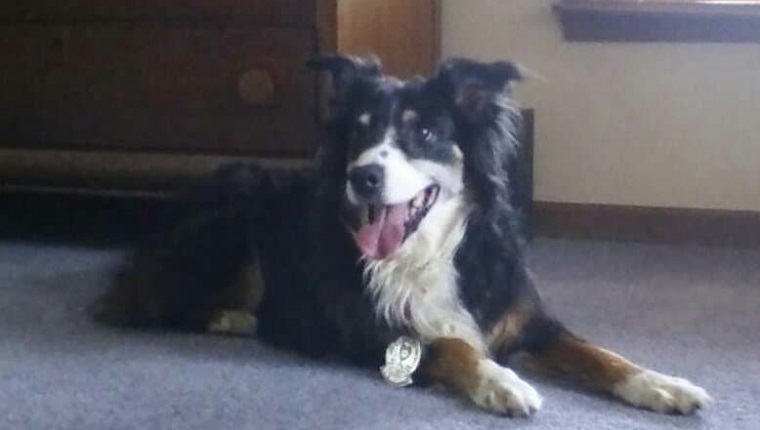
AMANDA: Could you please tell us why you decided to get a service dog?
GAYLE: I was totally incapacitated after breaking my ankle and having surgery when Sera was two. We had trained in obedience and agility since she was a pup. She loved retrieving, and I had no idea how I would be able to cope with a very busy young dog and me not able to walk.
Sera was more than happy to bring me anything and everything I needed. She retrieved the phone, remote, coins, etcetera, without formal service dog training. She was so in tune with me that she knew exactly what I needed.
AMANDA: I’m glad Sera is able to help you. She sounds very smart. What else did she do to help you? Was it pretty typical of service dogs?
GAYLE: Sera was very focused on her job, but mostly her job was at home.
The interesting thing is that she was also a therapy dog. Some therapy dog organizations will not certify service dogs as therapy dogs, but Sera knew the difference.
She could switch between jobs smoothly and knew when she was allowed to be petted, but she was always attentive to me, too.
In that way I don’t believe she was a “normal” service dog.
AMANDA: What an intelligent, empathetic dog! Can you tell us more about Sera? What was her personality like? Was she more “professional” or more of a loving family member — or both?
GAYLE: Sera was loving, focused, protective, and so, so smart. So easy to train. She would understand tasks almost immediately. She was a beloved family member, but a serious worker.
From Puppy To Trained Service Dog
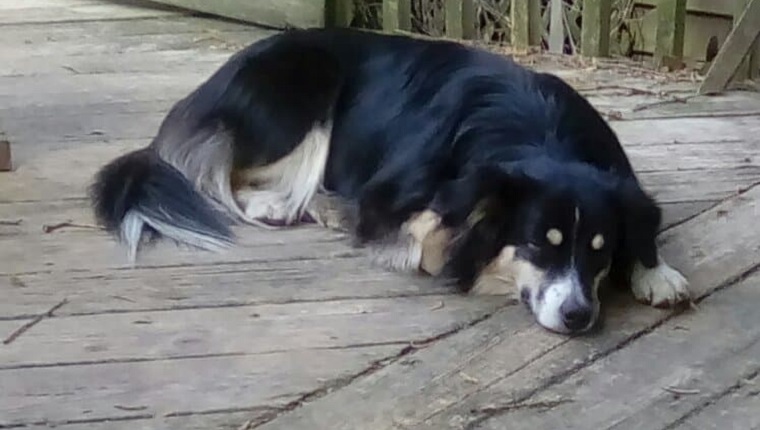
AMANDA: I think it’s so unique to be part of the entire journey of a service dog like you’ve been — starting from breeding, then training her, then letting her work for you. What was it like to be part of that entire process? Would you recommend it? Would you do it again?
GAYLE: I knew Sera was very special from the beginning. She was a very focused puppy, making eye contact and wanting human interaction from the time her eyes opened.
I hadn’t really thought about keeping one of the pups, but my dad passed away a few months earlier, and I needed her in my life to be my therapy dog. This was just after 9/11.
People would come to pick out pups, but she would stay in the puppy box, determined to stay with me. So, our bond was very strong from the very beginning.
She was so perceptive and sensitive. I don’t think there could have ever been a dog more in tune with me.
I am now training her granddaughter as a service dog, and she is very much like Sera — very focused on her job and giving me that constant eye contact and just wanting to please.
AMANDA: That’s so sweet. What a great bond you two had! Do you have future plans to train more service dogs?
GAYLE: Sera has been gone for four years, and I am training her granddaughter, Saga, as my service dog. She is very focused like Sera and loves to work.
AMANDA: That’s a beautiful legacy!
What Is It About Aussies?
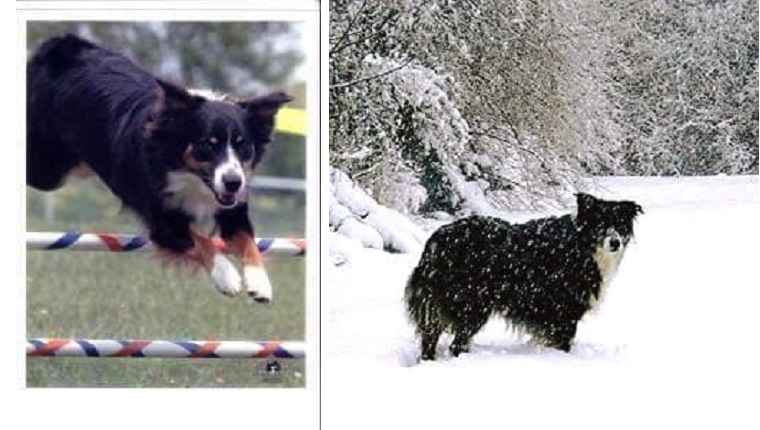
AMANDA: Do you think Australian Shepherds make particularly good service dogs? Why or why not?
GAYLE: I know several Aussie service dogs working for mobility-impaired partners. Aussies should be work-oriented and rise to the task they are given. They should be bred for intelligence and the desire to work with humans.
They tend to be a one-person or one-family dog and are extremely loyal and protective. So, I guess this is a question of breeding practices. There are many who are breeding for looks and have left behind all those characteristics that should make up a working dog.
AMANDA: What do you wish people knew about Australian Shepherds?
GAYLE: Aussies are beautiful, intelligent dogs who need jobs. I wish I could impress on everyone that they do not belong in every home. If not given an outlet for their energy and intelligence, they can be very difficult to handle.
They need to be trained with positive reinforcement because they are very sensitive.
Aussies will shut down with heavy-handed training techniques.
What To Know If You Want To Get Or Train A Service Dog

AMANDA: Do you have any advice for anyone who may be considering getting a service dog?
GAYLE: Make certain the breeder is actually breeding dogs that work.
A friend got her current SD from an Aussie rescue group, so don’t overlook that route.
Many times dogs are in rescue because they need a job and weren’t given one, which can lead to problems. By all means, find a good, positive reinforcement trainer who can help you train your service dog.
AMANDA: Do you have any advice for anyone who may want to get into training service dogs for themselves or others?
GAYLE: My advice is to find a mentor to help you get into training. I have been fortunate to have had trainers who have helped me achieve my goals.
AMANDA: What do you wish people knew about service dogs?
GAYLE: Service dogs are real dogs who have lives where they play and have fun, besides working.
AMANDA: Thank you so much for your time and sharing your story, Gayle. I think people will learn a lot from the great information you shared.
Have you had any experiences with service dogs like Gayle has? Will you help us celebrate these dogs in National Service Dog Month? Let us know in the comments below!

